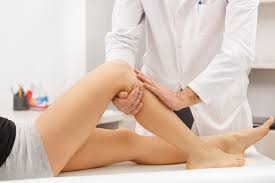Pain in your legs while walking can lead to bigger problems if they are left untreated. For many, it starts after a short distance and eases with rest, while the discomfort may persist for others. Here are some of the common causes of leg pain during walking, available solutions, and when you might consider seeing a doctor:
What Are Common Causes of Leg Pain?
Several medical conditions may cause pain in the legs, particularly while walking. While some causes of leg pain can be managed with simple adjustments, others may require medical attention. Some of the most common causes of leg pen include the following:
- Muscle strain: overexertion of mucles from exercising too much.
- Varicose veins: These enlarged, twisted veins can lead to pain and discomfort, particularly after long periods of walking or standing.
- Peripheral artery disease (PAD): PAD occurs when there’s reduced blood flow to the legs due to narrowed arteries, often causing cramp-like pain while walking.
- Deep vein thrombosis (DVT): A blood clot that forms in the deep veins of the leg, DVT can cause swelling, pain, and tenderness in the affected area.
- Chronic venous insufficiency (CVI): CVI occurs when the veins in the legs have trouble sending blood back to the heart, which can lead to aching and heaviness after physical activity.
What Are Some Solutions?
The treatment for leg pain while walking largely depends on the cause. Sometimes it can be solved with simple lifestyle changes; but other times, it’s time to see a doctor. There are a handful of approaches that are often recommended.
Lifestyle Changes
Sometimes prolems are minor and don’t require surgery. For many individuals, lifestyle adjustments can help reduce leg pain. Regular exercise, weight management, and avoiding prolonged periods of sitting or standing help improve circulation and reduce discomfort.
Medical Procedures
When lifestyle changes aren’t enough, medical interventions may be necessary, particularly for conditions such as PAD, varicose veins, or DVT. These treatments can significantly improve quality of life for those experiencing persistent leg pain, but they are best discussed with a healthcare provider. Some standard procedures include the following:
- Peripheral artery disease (PAD)
- Angioplasty: This minimally invasive procedure opens blocked arteries to restore blood flow.
- Atherectomy: Removes plaque buildup in the arteries.
- Bypass surgery: Creates an alternative route for blood flow using blood vessels or synthetic materials.
- Deep vein thrombosis (DVT)
- Thrombolysis: A treatment that breaks down blood clots with medication.
- Thrombectomy: A surgical procedure to remove blood clots from a blood vessel.
- Varicose veins
- Sclerotherapy: A solution is injected into the vein, causing it to collapse and eventually fade.
- Microphlebectomy: Removes small sections of varicose veins through tiny incisions.
- Endovenous laser therapy (EVLT): Uses heat from laser energy to seal off problematic veins.
When Is It Time to See a Doctor?
While occasional leg pain may not be a cause for concern, sure signs indicate it’s time to seek medical advice. Persistent pain that doesn’t improve with rest or over-the-counter remedies warrants further evaluation. If your pain is consistent when walking and impairs your ability to carry out daily activities, scheduling a visit with a healthcare professional is a wise decision.
Final Thoughts
Leg pain while walking can have a range of causes, from minor discomfort to conditions that require medical intervention. Understanding potential causes like varicose veins, PAD, or DVT and exploring solutions such as lifestyle adjustments or medical treatments can help you move forward with confidence. If your pain persists or worsens, don’t hesitate to consult a doctor to identify the underlying cause and receive the care you need.
